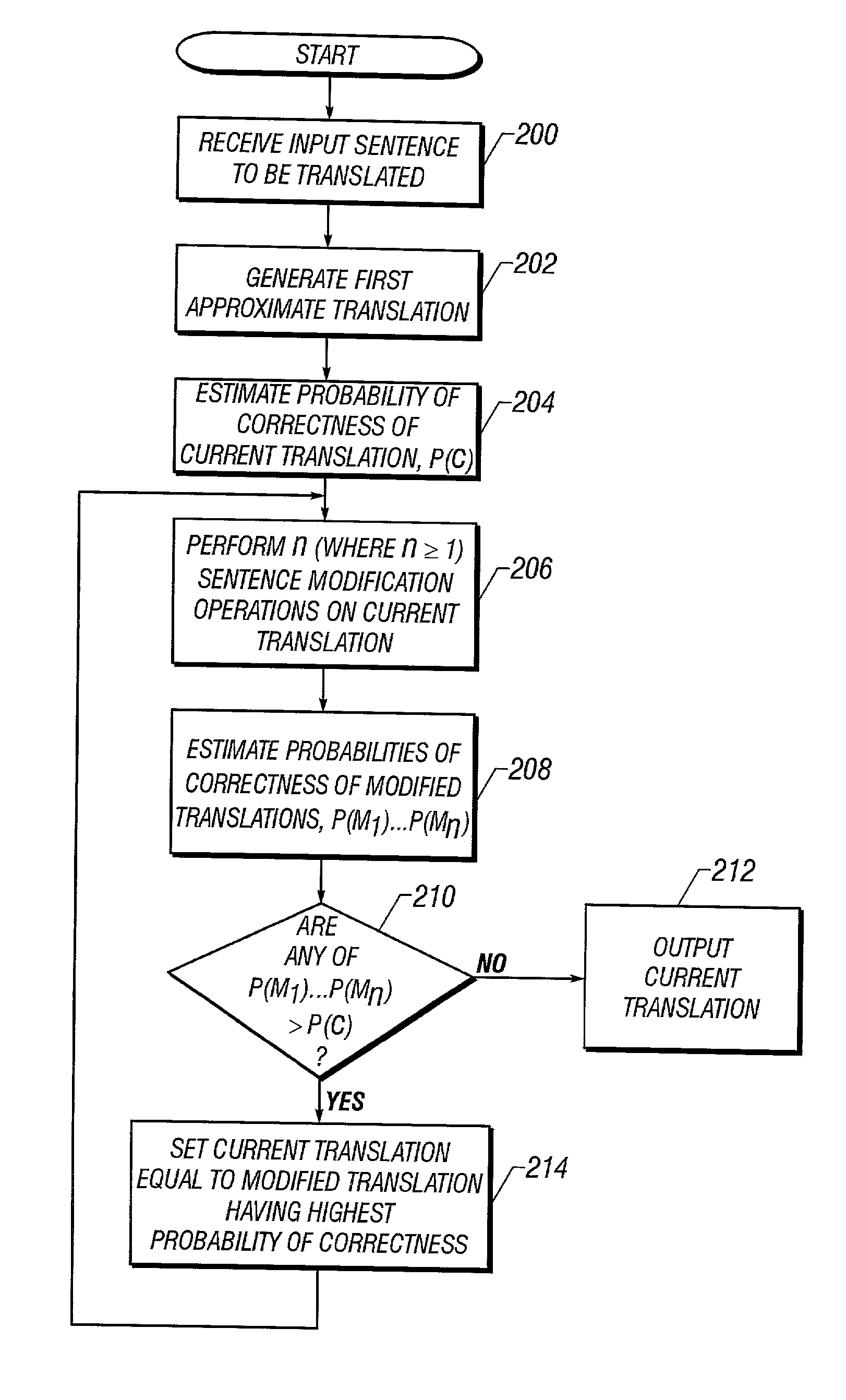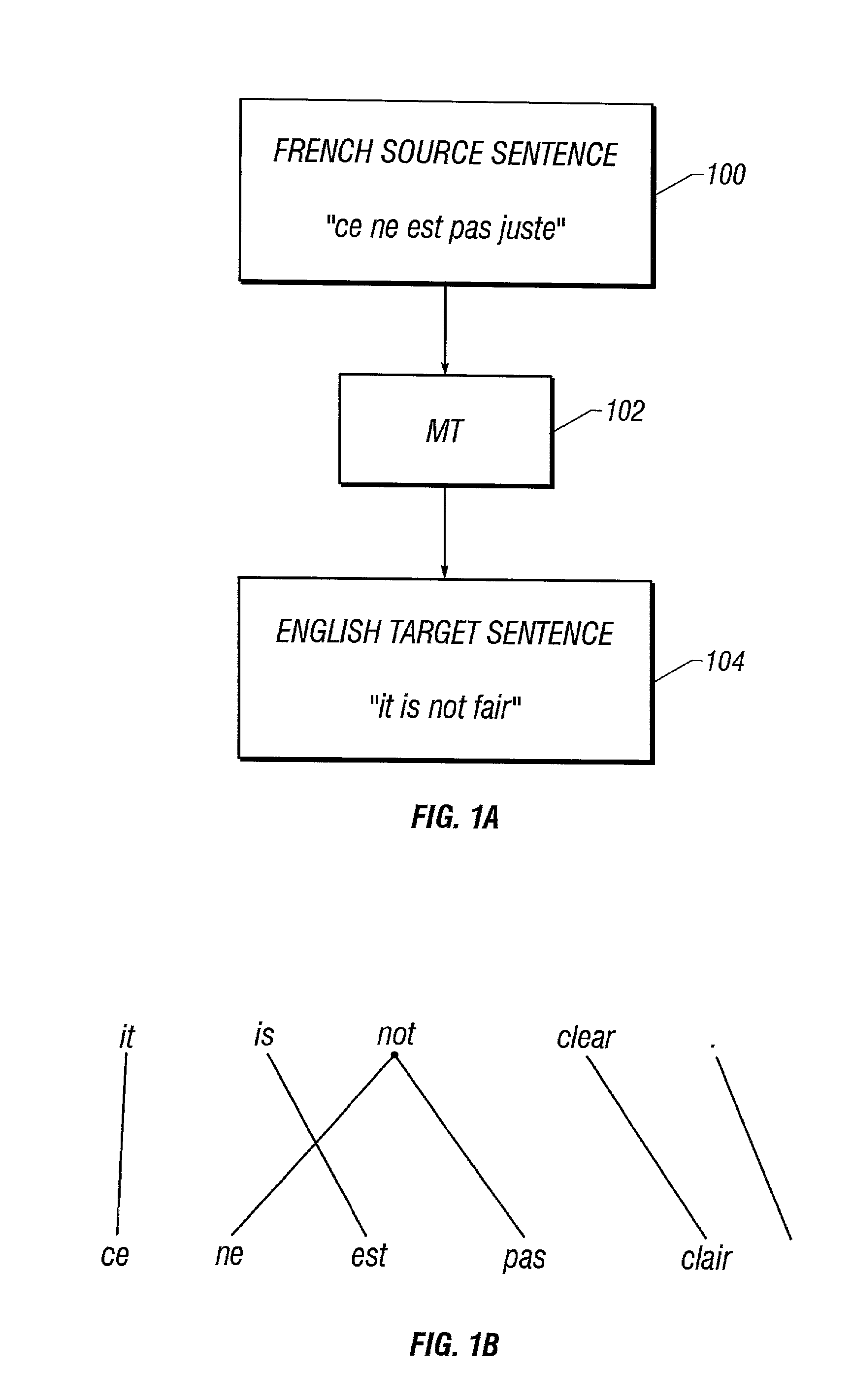Machine translation techniques
a machine translation and machine technology, applied in the field of machine translation techniques, can solve the problems of large computational cost, large cost of maintaining and searching a large potential solution space such as used by stack decoders, and achieve the effects of enhancing flexibility, richness and robustness of the resulting mapping, and being easy and convenient to us
- Summary
- Abstract
- Description
- Claims
- Application Information
AI Technical Summary
Benefits of technology
Problems solved by technology
Method used
Image
Examples
Embodiment Construction
isSentenceTheLastUnitinJapTr-eeOfTopStack=false
[0191] then rhetRelOfTopStackInEngTree EVIDENCE
[0192] Table 5: Rule examples for the Relation-Reduce classifier
[0193] Evaluation of the Discourse-based Transfer Module
[0194] By applying the General classifier or the other six classifiers successively, one can map any Japanese discourse tree into a tree whose structure comes closer to the natural rendering of English. To evaluate the discourse-based transfer module, a ten-fold cross-validation experiment was performed. That is, the classifiers were trained on 36 pairs of manually built and aligned discourse structures, and then the learned classifiers were used in order to map 4 unseen Japanese discourse trees into English-like trees. The similarity of the derived trees and the English trees built manually was measured using the metrics discussed above. This procedure was repeated ten times, each time training and testing on different subsets of tree pairs.
[0195] The results reported in ...
PUM
 Login to View More
Login to View More Abstract
Description
Claims
Application Information
 Login to View More
Login to View More - R&D
- Intellectual Property
- Life Sciences
- Materials
- Tech Scout
- Unparalleled Data Quality
- Higher Quality Content
- 60% Fewer Hallucinations
Browse by: Latest US Patents, China's latest patents, Technical Efficacy Thesaurus, Application Domain, Technology Topic, Popular Technical Reports.
© 2025 PatSnap. All rights reserved.Legal|Privacy policy|Modern Slavery Act Transparency Statement|Sitemap|About US| Contact US: help@patsnap.com



